#phin cafe
Explore tagged Tumblr posts
Text
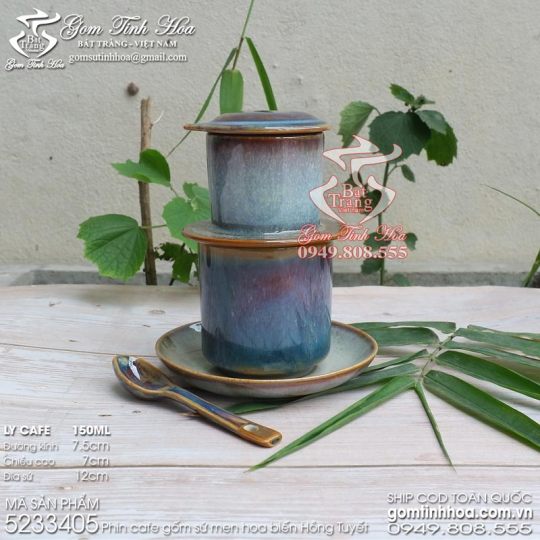


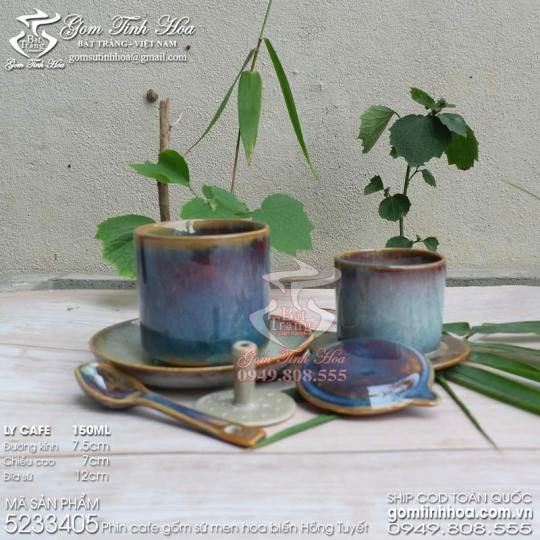
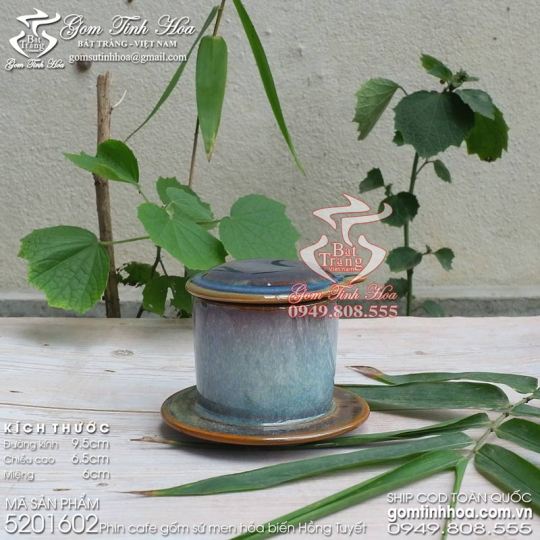
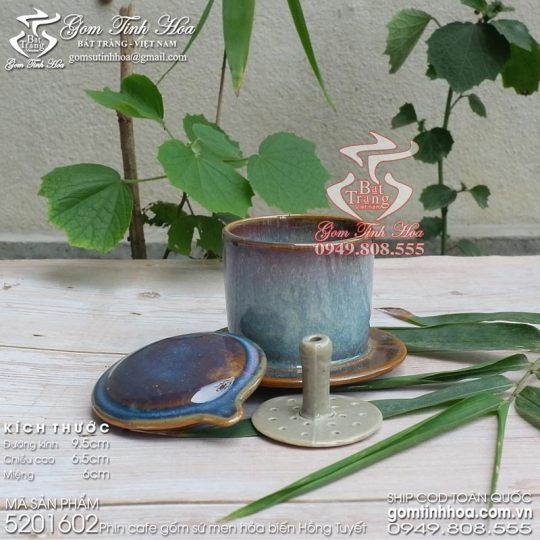
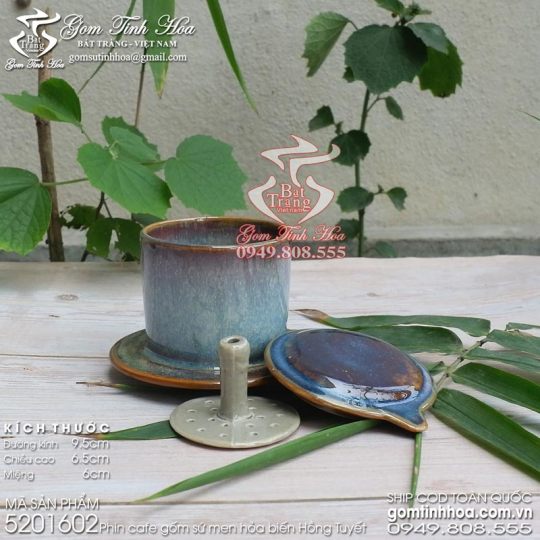
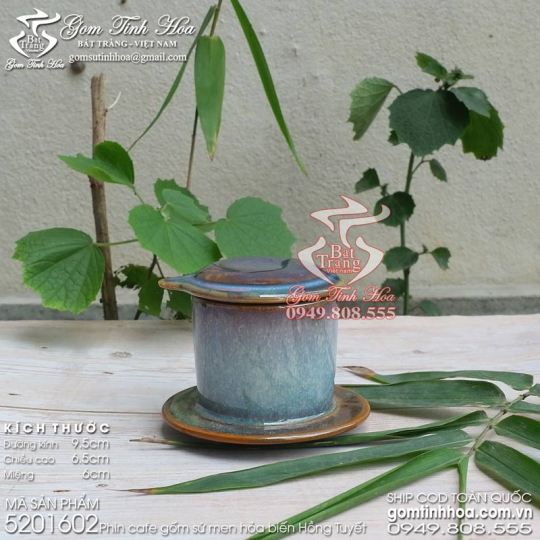


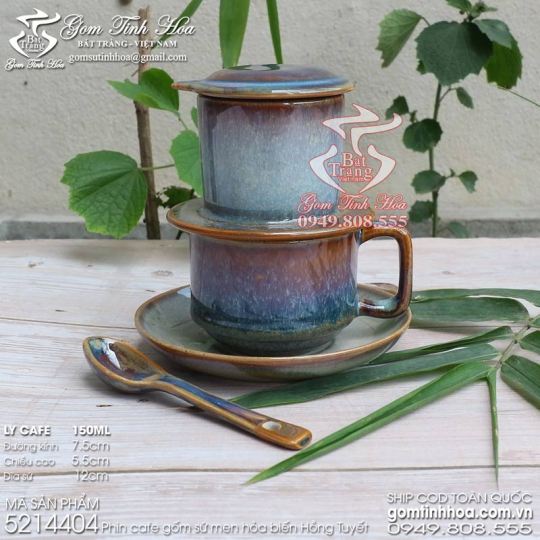
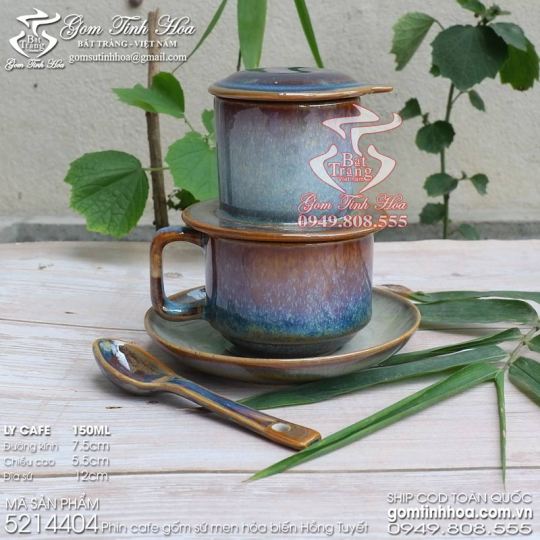

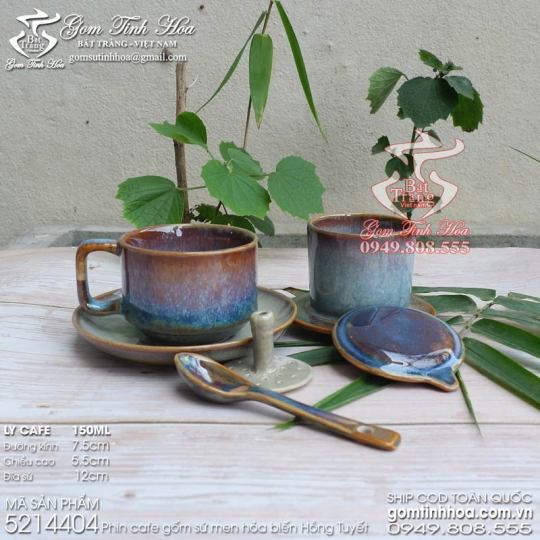
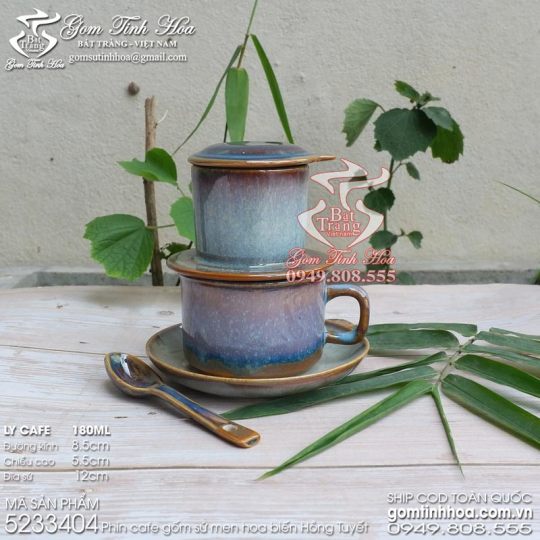
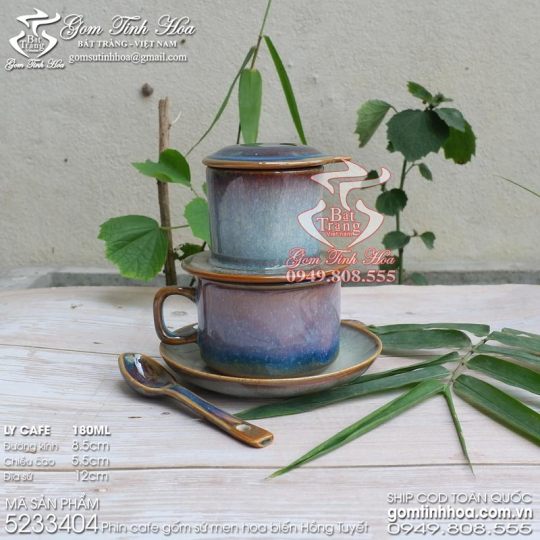


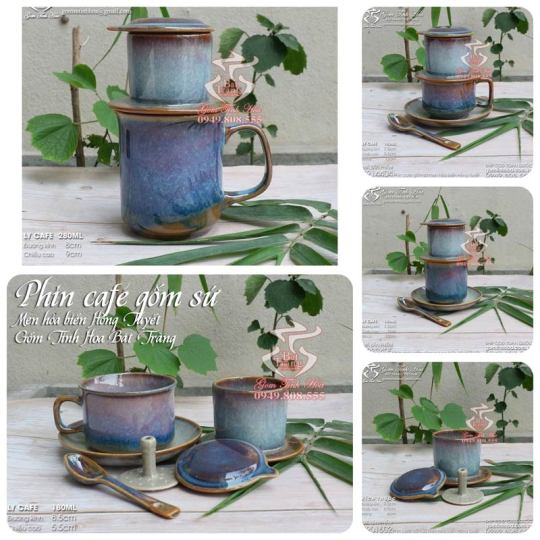
Phin cafe gốm sứ Bát Tràng cao cấp men hỏa biến Hồng Tuyết Dung tích và kích thước sản phẩm: Vui lòng xem trên từng ảnh sản phẩm
Nguồn gốc xuất xứ: Làng gốm Bát Tràng - Hà Nội - Việt Nam
GỐM TINH HOA BÁT TRÀNG Add: Số 51, đường Bát Tràng, thôn 1 Làng cổ Bát Tràng, xã Bát Tràng, huyện Gia Lâm, Hà Nội
Hotline/ Zalo: 0949808555
Nhập mã sản phẩm gồm 07 chữ số ở góc dưới ảnh vào website www.gomtinhhoa.com.vn để chủ động tra cứu giá bán hoặc để lại comment để nhận giá bán. Gốm Tinh Hoa ship cod Toàn Quốc đơn hàng chỉ từ 01 sản phẩm. Khách hàng được quyền coi/ xem sản phẩm trước khi trả tiền cho nhân viên giao hàng, được quyền từ chối nhận hàng mà không phải trả phí nếu sản phẩm bị lỗi do nhà sản xuất, sản phẩm bị bể vỡ trong quá trình vận chuyển hoặc sản phẩm không đúng với hình ảnh đã mô tả, quảng cáo.
#phin cà phê#phin cafe#phin cafe gốm sứ#phin cà phê gốm sứ#phin cafe bằng sứ#phin sứ#phin sứ bát tràng#phin cafe đẹp#phin cafe men hỏa biến#phin cafe gốm sứ cao cấp#phin cafe men hỏa biến hồng tuyết#men hỏa biến#men hỏa biến hồng tuyết#gốm tinh hoa#gomtinhhoa#gomtinhhoa.com.vn#gốm tinh hoa bát tràng#tinh hoa gốm bát tràng#gốm sứ tinh hoa bát tràng#tinh hoa gốm sứ bát tràng#battrangonline#bát tràng online#battrang360#tinh hoa bát tràng#tinhhoabattrang#battrang#gốm bát tràng#quà tặng gốm sứ#quà tặng bát tràng#phin cà phê đẹp
0 notes
Text
Phin Café, 34460 Fremont Blvd, Ste D, Fremont, CA 94555

Phin Café recently opened in the 99 Ranch shopping center in North Fremont. A modern Vietnamese coffee specialist, they also serve banh mi, musubi, egg puffs, fries, pandan waffles, smoothies, tea, fruit tea, milk tea, and matcha drinks.
The Phin Coffee: Vietnamese coffee with your choice of topping (e.g., egg, durian, pandan, ube) - $8.50 regular price, 20% off during the soft opening, served with a few crispy sweet baguette chips on the side. I selected coconut for the flavor. Interesting drink. The coffee is made with a small filter that sits on top of the cup (Vietnamese style). There’s condensed milk on the bottom, under the coffee. It would be nice to have the condensed milk on the side, so you could sweeten according to personal preference. An iced coconut slush is served in a separate cup, topped with coconut shavings. You add the coffee and condensed milk to the coconut slushy and stir. The drink was very sweet, like a dessert drink, but the flavor was also very nice – the combination of strong coffee with coconut. The crispy, sweet baguette chips were okay – simple, sweet, crunchy.
Egg puffs ($4.75): These were okay. They were soft all over, except for the outer edges. I’m used to crispy bits between each egg puff. I wouldn’t get these again.
Order at the register. They’ll call your number when your order is ready for pickup. It’s already a popular place with campers. The décor is cozy – grey and brown with plants.
4 out of 5 stars
By Lolia S.
0 notes
Text
Phin Café, 34460 Fremont Blvd, Ste D, Fremont, CA 94555, Score: 41/50

Phin Café recently opened in the 99 Ranch shopping center in North Fremont. It’s already a popular place with campers.
Score: 41/50
Food: 4/5 – They serve banh mi, musubi, egg puffs, fries, and pandan waffle. The egg puff was too soft but they have more savory food options than lots of camping places.
Coffee: 5/5 – They specialize in Vietnamese coffee but also have smoothies, tea, fruit tea, milk tea, and matcha drinks. The Phin Coffee is Vietnamese coffee with your choice of topping (e.g., egg, durian, pandan, ube) - $8.50, served with a few crispy sweet baguette chips. I selected coconut for the flavor. Interesting drink. The coffee is made with a small filter that sits on top of the cup (Vietnamese style). There’s condensed milk on the bottom, under the coffee. An iced coconut slush is served in a separate cup, topped with coconut shavings. You add the coffee and condensed milk to the coconut slushy and stir. The drink was very sweet, like a dessert drink, but the flavor was also very nice. Coconut and coffee go well together.
Wi-fi: 5/5 – Free, unlimited, the password is on the receipt
Ambiance: 4/5 – Cozy, lots of hanging pendant lights, plants, light wood accents. Grey and brown with plants.
Noise: 4/5 – Mellow instrumental music, people are pretty quiet
Plugs: 5/5 – Built in to the posts under the benches
Parking: 5/5 – Plenty of parking in the parking lot
Comfort: 3/5 – The shop is small and popular with campers already. The wood bench is uncomfortable but the chairs are padded. Tables are small and close together. The seats near the windows can be too bright.
Bathroom: 3/5 – One unisex
Art: 3/5 – None. They have their lit up logo on the wall
Tips: Place your order and they’ll call your number when it’s ready for pickup.
“Laptop Campers Unite!”
0 notes
Text
Cà phê sữa ðá (Update)
Vor über 100 Jahren brachten die Franzosen Kaffee nach Vietnam und die Vietnamesen haben daraus etwas ganz Eigenes gemacht: Cà Phê Sữa Dà. Dieser starke Kaffee wird mit süßer Kondensmilch und Eiswürfeln zubereitet. Durch einen speziellen Metallfilter, dem Phin, tropft heißes Wasser langsam über die gesüßte Kondensmilch und sammelt sich in einem Glas zu einem kräftigen, espressoähnlichen…

View On WordPress
#coffeenewstom#Ca Phe Sua Da#Café Hanoi#Cafe Phin#Cà Phê Nâu Dà#Cà Phê Phin#Cà Phê Sữa Dà#Coffeenewstom#Hanoi#München Sendling#Partnachplatz#Phin#Phin-Kaffee#Sendling#Vietnam#Vietnam-Kaffee#vietnamesischer Kaffee#Vietnamkaffee
0 notes
Text

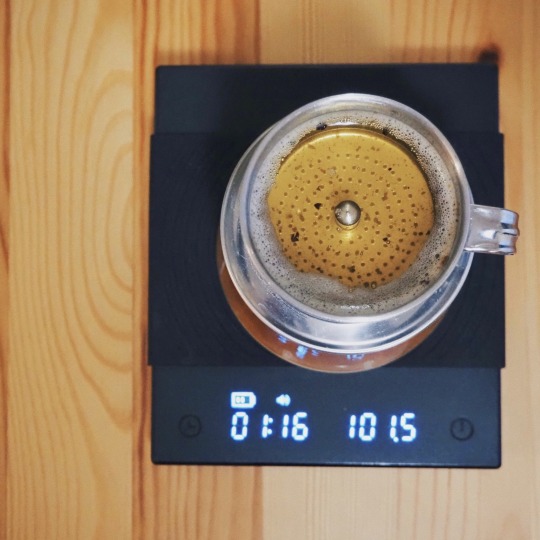
I woke up feeling experimental a couple of days ago. The result was swapping my usual coffee for Vietnamese coffee. I haven't had it for a long time so it was the highlight of my day. It got me thinking.
Vietnamese coffee is typically made using coarsely ground, dark roasted Robusta. It is brewed through a small metal, cylindrical dripper called a phin, and is partnered with Vietnamese condensed milk. Until a couple of months ago, I did not know these specific details. The source of my enlightenment is this coffee podcast I was listening to while out on a walk. From that episode, I learned that while Vietnamese coffee became a trend during the pandemic, the context behind it has been somewhat lost in the hype. Non-Vietnamese people who drink it might perhaps think that it’s “quirky” because of the condensed milk, simply a novelty. But in fact there is a practicality, a necessity behind the use of condensed milk over regular milk. Condensed milk does not require refrigeration and does not spoil as fast as regular milk. In a country that had been poverty stricken and did not have readily available access to refrigeration in the past, this is a critical adaptation to make. And while “Vietnamese Coffee” can technically be made using any type of coffee beans, Robusta (rather than the more dominant Arabica) is specifically the type of coffee bean grown and cultivated in Vietnam. Yet the few cafes who do offer the drink do not specify if they’ve sourced their beans from Vietnam. On a philosophical level, it begs the question: when is Vietnamese Coffee truly a cup of Vietnamese Coffee, and when is it just coffee beans ground to a certain coarseness, filtered through a metal contraption and then mixed with sweet milk?
Now, personally, this is what I love about coffee as a passion. It is science, it is history, it is economics, it is anthropology. I think the desire to feel connected to the land is a part of what it means to be human. When I look for a bag of beans, the origin, the process, the plot of land, the altitude—every single detail matters. It allows me a glimpse into the lives of every single individual who partook in making that bag of coffee possible. It reminds me of the brutal history of coffee, the colonialism and the very long way we have left to truly make it an equitable trade. When I make the decision to buy coffee from a local roaster I am trying to connect with the land, the community of people who are reclaiming their story.
There’s a stereotype for people like me, I am aware, that assumes this meticulousness is out of a sense of elitism or perhaps condescension. Perhaps that stereotype of the “coffee bro” is warranted to an extent (and let’s not even get into the generalization that being “serious about coffee” is a “masculine” trait because here I am, an actual woman who can appreciate specialty coffee without feeling the need to shit on Starbucks/Dunkin). As with any hobby, a small group of people will always take it too far. But allow me to defend this lifestyle just a little bit here.
Before I knew anything about coffee it only served a ritualistic (perhaps a placebo) purpose of “keeping me awake” for the day-in-day-out “grind” (whatever the fuck that actually means, I don’t even know anymore). When I examine my relationship with coffee now, ironically, it is still all about keeping me awake though in a much deeper, existential sense. It is an avenue in my life where I can exercise my consciousness, a means to truly live life to the fullest extent. It challenges me to think more deeply about what I put in my body. It pushes me to heighten my senses, to truly savor everything. It guarantees that I do not take this one life I have for granted.
I think our modern world so easily trips on the illusion of perfection. Everything is glossy and staged and pretty. Worse, there seems to be a tendency to enshrine perfection that looks to have been achieved quickly and effortlessly. But whenever I enjoy coffee I am reminded of the value in the long, exhaustive trial-and-error that comes with producing interesting coffee. When I have my coffee while working I am reassured that I am allowed to be human and alive, not a product, not a thing manufactured through an assembly line. I don’t mean to preach that everyone should only be buying artisan, handmade goods all of the time. I don’t mean to advocate that unless you research your food down to the chemical level then you’re not living a good life. There is no such thing as a perfect way of life. There is only trying and doing. So we must always keep our eyes open and our minds receptive to anything we might have to relearn or unlearn. There’s always more to understand, change our minds about.
I’ve gone a very long way from Vietnamese coffee but here’s my point, finally:
Before I listened to the podcast’s episode on Vietnamese coffee, I didn’t know that it had that history behind it. I had been making it using whatever beans I had at home, not taking into consideration that it is traditionally made with Robusta beans. But I do know now. So while it is not a crime to make Vietnamese coffee with whatever beans you have at home, I now have the knowledge to try to come as close to it. I don’t live in Vietnam but I can choose Robusta beans specifically next time I look for beans. I can look up a cafe specifically catering beans from Vietnam. My horizon has expanded and I think that’s a beautiful thing.
8 notes
·
View notes
Text
closed starter for @ccmpletemess ( tinsley ft. phin )

secrets. the prescott family had always been filled with them, but tinsley wanted was exhausted of them and wanted to put it all behind her and start fresh. that wasn't one hundred percent possible yet, but hopefully things would settle down soon an she could learn to feel genuinely happy which she wasn't sure was even possible.
her sources ( a lovely young girl named ophelia, cordelia's best friend in the entire world ), had told her that phin had gone to huntsville so after giving him a couple weeks to settle in, she'd packed some bags and travelled to huntsville to check in on her nephew.
tinsley had lied to her husband about where she was going, told him it was a trip with her friends and he hadn't asked too many questions. once she was in huntsville and had settled into her hotel room she'd texted phin the location of a small cafe on the edge of town to meet her at and hoped he'd arrive.
she was currently sitting outside, waiting with her jacket wrapped tightly around her given the cold canada air. her heart beat faster as she saw him approaching and she ran her fingers nervously through her hair. "phin." she said softly. "how are you?" she asked, knowing it was a loaded question but one she needed to ask.

6 notes
·
View notes
Text
cac loai phin cafe su
Phin cafe sứ có cấu trúc cụ thể như sau:
Số lỗ ở phin và đĩa như thể nhau.
Tuỳ loại cà phê nhưng mà phin lọc có lỗ thích hợp.
Nắp đậy kín cực kì tránh mất nhiệt.
Có độ dày thích hợp và vật liệu tốt để giứ nhiệt tốt.
Tại sao các loại phin pha cafe men sứ ngày càng được ưa chuộng?
Sau khi đã biết bao quát các thành phẩm phin cafe bằng sứ rồi thì những yếu tố dưới đây là lý bởi cho thấy chế phẩm gốm nung sứ nung dẫn thay thế những vật liệu khác:
Phin gốm tráng men an toàn cho người sử dụng
Cũng như là bát ăn cơm mỗi ngày (luôn được khuyến cáo dùng nguyên liệu gốm không tráng men sứ) thì phin sứ nung cũng vậy. Để giảm thiểu các kim loại nặng hay các chất độc hại tồn dư thì các ch�� phẩm phin Cafe men sứ Bát Tràng được nung nhiệt 1200 độ giúp luôn an toàn với sức khoẻ.
tuyệt vời khi lọc phin cafe với nhiệt độ nước sôi 90 – 100 độ C cũng hoàn toàn yên tâm.
Phin coffee sứ Bát Tràng rộng rãi mẫu mã
Ngoài việc đảm bảo an toàn cho sức khoẻ ra thì việc nhiều mẫu mã để phù hợp hơn với gu cá tính của từng người cũng rất thiết yếu. Bởi thưởng thức cà phê là tận hưởng sự chậm rãi đời sống, cảm nhận sự hoà quyện từ bên trong ra ngoài từ dụng cụ thưởng thức đến hương vị.
Môt số loại phin pha cafe sứ nung
Phin cà phê gốm sứ có công năng thẩm mỹ cao
Cuối cùng, các vật phẩm phin gốm tráng men luôn có ích thế cạnh tranh tuyệt đối so với các chất liệu khác, dễ dàng vệ sinh nhưng không bị hoen ố.
Giá phin men sứ bao nhiêu tiền?
Với sự nhiều của phin cafe sứ thì mức giá thành cũng có sự thay đổi khác nhau. Mà căn bản phin cafe gốm tráng men Bát Tràng có giá từ 70.000 – 2.00.000 vnđ. Thích hợp với mọi đối tượng thưởng thức cà phê hay các quán kinh doanh cafe ngày nay.

Nguồn xem ngay bài viết: phin cafe sứ
2 notes
·
View notes
Text
Why Vietnamese Coffee Is the Best?
Vietnamese coffee stands out for its rich tradition and unique flavor. It is beloved by coffee enthusiasts around the world. This article explores the reasons why Vietnamese coffee is the best.
The History of Vietnamese Coffee
Vietnamese coffee has a rich and complex history that intertwines with the country’s cultural and economic development. Understanding its origins and evolution provides insight into why it has become a beloved beverage both locally and internationally.

Introduction of Coffee to Vietnam
Coffee was first introduced to Vietnam in the 19th century.
French colonists brought coffee plants to the region.
The first coffee trees were planted in the Central Highlands.
The climate and soil conditions were ideal for coffee cultivation.
Adaptation and Growth
Over time, local farmers adapted the cultivation techniques.
They began to plant coffee more extensively.
Coffee became an important cash crop.
Farmers experimented with different growing methods to enhance quality.
Economic Impact
After the Vietnam War, coffee production became a key part of the national economy.
The government encouraged coffee farming as a means of economic recovery.
The expansion of coffee production led to increased exports.
Vietnam quickly became one of the world’s largest coffee producers.
Transition to Commercial Production
In the late 20th century, Vietnam transitioned from subsistence farming to commercial production.
This shift attracted foreign investment and technology.
Farmers focused on improving quality and yields.
The coffee industry became a vital economic sector, providing jobs for millions.
Cultural Integration
Coffee drinking became integrated into Vietnamese culture.
Cafes emerged as popular social hubs, fostering community connections.
The traditional phin brewing method was developed, enhancing the unique flavor profile.
Sweetened condensed milk was introduced, creating a distinct Vietnamese coffee experience.
Global Recognition
In recent years, Vietnamese coffee has gained global recognition.
Specialty coffee shops worldwide now feature Vietnamese-style brews.
The demand for authentic Vietnamese coffee experiences has increased.
Coffee enthusiasts appreciate its bold flavors and unique brewing methods.
Sustainability Efforts
Today, many Vietnamese coffee farmers are adopting sustainable practices.
Organic farming methods are gaining traction.
These practices focus on environmental health and improving coffee quality.
The global shift towards sustainability is reflected in the growing interest in ethically sourced Vietnamese coffee.
Vietnamese coffee is renowned for its unique brewing methods, which contribute to its bold flavors and rich aroma. The traditional approach sets it apart from other coffee cultures around the world. Here are some key aspects of these distinctive brewing methods:
Phin Filter Brewing
The phin filter is a small, metal drip filter used in Vietnam.
It consists of three parts: a filter chamber, a drip tray, and a lid.
Ground coffee is placed in the filter chamber.
Hot water is poured over the coffee grounds.
The water slowly drips through, creating a concentrated brew.
Slow Brewing Process
Brewing with a phin is a slow and deliberate process.
It typically takes around 5 to 10 minutes for the coffee to drip.
This slow brewing allows for maximum extraction of flavors and aromas.
It encourages mindfulness, as drinkers wait patiently for their coffee.
Serving Styles
Vietnamese coffee can be served hot or iced.
Iced coffee, known as “cà phê sữa đá,” is particularly popular, especially in warmer months.
To prepare iced coffee, the phin is placed over a glass filled with ice and sweetened condensed milk.
The hot coffee drips directly onto the ice, creating a refreshing drink.
Use of Sweetened Condensed Milk
One distinctive feature of Vietnamese coffee is the addition of sweetened condensed milk.
This ingredient adds creaminess and sweetness, balancing the coffee’s bitterness.
It transforms the flavor profile, making it rich and indulgent.
Many people prefer this sweetened version, as it enhances the overall experience.
Variations and Innovations
Various regional variations exist, such as “cà phê trứng,” or egg coffee, which includes whipped egg yolk and sugar.
Some cafes offer unique twists, like coconut or yogurt coffee.
These innovations showcase the creativity and diversity of Vietnamese coffee culture.
Cultural Ritual
The brewing process itself is often seen as a cultural ritual.
Friends and family gather to enjoy coffee together, fostering social interaction.
The experience of brewing and sipping Vietnamese coffee emphasizes connection and community.
Vietnamese coffee is known for its unique brewing methods. The traditional phin filter is essential to the process. It is a small metal drip filter. The coffee grounds are placed inside it. Hot water is poured over the grounds.
The water slowly drips through the coffee. This process takes several minutes. The result is a strong and rich brew. It has a bold flavor profile. The phin method enhances the coffee’s aroma. It creates a delightful sensory experience.
This slow brewing technique is not just about flavor. It also encourages mindfulness. People take the time to enjoy the brewing process. This aspect of Vietnamese coffee culture emphasizes savoring each cup.
See Also: The Oldest Coffee Brand in History
The Role of Robusta Beans
Vietnam primarily grows Robusta coffee beans. These beans are known for their strong flavor and higher caffeine content. They have a distinct earthy taste. This is different from the Arabica beans commonly used in Western coffee.
Robusta beans are easier to cultivate. They thrive in Vietnam’s climate. They are resistant to pests and diseases. This contributes to their popularity among local farmers.
Robusta’s unique taste profile is often described as bold and bitter. This creates a different experience compared to the milder Arabica. Many people appreciate the intensity that Robusta brings.
Condensed Milk: A Sweet Touch
One of the most distinctive and beloved features of Vietnamese coffee is the use of sweetened condensed milk. This addition not only enhances the flavor but also plays a significant role in the overall coffee experience. Here’s a closer look at why condensed milk is such an integral part of Vietnamese coffee culture.
Historical Context
Sweetened condensed milk was introduced to Vietnam during French colonial rule.
It became popular due to its long shelf life and convenience.
The combination of coffee and condensed milk evolved as a practical solution for enhancing flavor.
Flavor Profile
Condensed milk adds a rich creaminess to the coffee.
It balances the strong bitterness of Robusta beans.
The sweetness creates a harmonious blend with the coffee’s natural flavors.
This unique combination results in a delightful contrast that is both satisfying and indulgent.
Preparation Methods
When making traditional Vietnamese coffee, sweetened condensed milk is often added to the glass first.
As the coffee drips through the phin filter, it mixes with the condensed milk.
For iced coffee, the hot brew is poured over ice and condensed milk, creating a refreshing drink.
Cultural Significance
The use of condensed milk in Vietnamese coffee reflects the country’s culinary creativity.
It has become a cultural staple, enjoyed by people of all ages.
Coffee shops and street vendors often feature this preparation, making it widely accessible.
Variations
While sweetened condensed milk is the most common addition, some variations exist.
For example, some people may add coconut milk or yogurt for a different twist.
These adaptations showcase the versatility of Vietnamese coffee and cater to diverse tastes.
Global Appeal
The sweetened condensed milk preparation has garnered international attention.
Many coffee enthusiasts outside Vietnam have embraced this unique style.
It invites people to explore the richness of Vietnamese coffee culture.
Cultural Significance
Vietnamese coffee is more than just a beverage. It plays a significant role in social gatherings. People often meet at cafes to enjoy coffee together. The coffee culture fosters connection and community.
Cafes are an integral part of Vietnamese life. They serve as social hubs. People relax, chat, and conduct business over coffee. This cultural significance adds to the appeal of Vietnamese coffee.
In Vietnam, enjoying coffee is often a leisurely activity. It encourages conversation and connection. Cafes are adorned with vibrant decor. They provide a cozy atmosphere for friends and families to gather.
Sustainable Practices
Vietnamese coffee farmers are increasingly adopting sustainable practices. They focus on environmentally friendly methods. This includes organic farming and shade-grown coffee. These practices protect the environment and improve coffee quality.
Consumers are becoming more aware of sustainability. They seek ethically sourced coffee. Vietnamese coffee meets these growing demands.
Many farmers are transitioning to organic methods. This not only helps the environment but also enhances the flavor of the coffee. Sustainable practices are crucial for the future of coffee farming in Vietnam. They ensure that future generations can enjoy quality coffee.
A Global Phenomenon
Vietnamese coffee has gained popularity worldwide. Specialty coffee shops now feature Vietnamese-style brews. The unique flavor and brewing methods attract new customers.
The international interest in Vietnamese coffee is growing. This trend highlights the diversity of coffee culture globally. It encourages exploration of different brewing techniques.
As more people discover Vietnamese coffee, the demand for authentic experiences increases. Many coffee lovers are eager to try the traditional methods. This interest has led to a rise in Vietnamese coffee brands internationally.
Conclusion
Vietnamese coffee is unique and flavorful. Its rich tradition, distinctive brewing methods, and cultural significance make it special. The use of Robusta beans and sweetened condensed milk adds to its appeal.
As coffee lovers explore the world of coffee, Vietnamese coffee stands out. Its bold flavors and cultural roots create an unforgettable experience.
With a growing focus on sustainability, Vietnamese coffee is also future-oriented. It is a true testament to the craft of coffee making. Vietnamese coffee is indeed the best choice for coffee lovers everywhere.
In summary, the combination of rich history, unique brewing methods, and cultural significance makes Vietnamese coffee exceptional. Whether enjoyed hot or iced, each cup tells a story of tradition and passion. This is why Vietnamese coffee deserves a place in every coffee lover’s heart.
0 notes
Text
PHIN PHA CÀ PHÊ NHÔM CAO CẤP
Phin Pha Cà Phê Nhôm Cao Cấp Mộc Coffee. Phin cà phê là một vật dụng không thể thiếu đối với những người yêu – đam mê cà phê. Nhưng bạn có biết đâu mới là một chiếc phin tốt nhất để cho ra những ly cà phê tuyệt hảo nhất?
Thông tin chi tiết sản phẩm phin cà phê:
Phin chuyên dùng cho pha cà phê, chứa được 20-30g bột cà phê, tương đương 1-2 người uống
Thể tích tiêu chuẩn 170ml
Khối lượng : 25g
Kích thước : Đường kính nắp phin, miệng phin 7cm, đường kính đáy thân phin 5cm, chiều cao thân phin 5.5cm, tổng chiều cao phin 7cm, đường kính đĩa phin 9.5cm
Số lượng lỗ trên thân phin, đĩa phin bằng nhau và phân bố đồng đều, kích thước lỗ phù hợp để cà phê chiết suất tốt nhất từ 50-60 giọt/phút.
Phin được làm bằng chất liệu nhôm sử dụng công nghệ Anode nên có độ bền vĩnh cửu, tuyệt đối an toàn, chống gỉ, chống bào mòn.
Phin cafe gồm: 1 nắp, 1 phin, 1 nắp gài, 1 đĩa phin
Hướng dẫn pha phin cafe:
Cho vào mỗi phin 20gr cà phê
Cho thêm 20ml nước sôi vào
Sau 5 phút cho thêm 20ml nước sôi nữa
Nén chặt cà phê trong phin, sau đó cho thêm 40ml nước sôi vào phin
Khi làm đúng quy trình, cứ 2 giây cà phê sẽ chảy 1 giọt
Sau 10-15 phút, quý khách sẽ có 1 ly cà phê ngon chuẩn vị
Lưu ý để sử dụng phin hiệu quả lâu dài:
Rửa sạch, tráng bằng nước sôi trước khi sử dụng
Tránh rơi rớt, tác động lực mạnh vào phin dẫn tới trầy xước, móp méo
Thông tin liên hệ:
MỘC CÀ PHÊ
Địa chỉ: 1 Lô J4, đường DD7, KDC An Sương, phường Tân Hưng Thuận, quận 12, thành phố Hồ Chí Minh.
Thời gian làm việc: 7AM – 9PM (tất cả các ngày trong tuần)
Hotline: 0915 189 979
Fanpage: fb.com/moccoffeecom
0 notes
Text
History of Vietnamese Coffee: Its Origin and How It Was Discovered
Vietnamese coffee, renowned for its unique preparation and robust flavor, has a rich history that dates back centuries. Let's explore the origins of Vietnamese coffee and how it became an integral part of Vietnamese culture, with a special mention of The CapheVietnam.
Origins of Vietnamese Coffee
Vietnamese coffee has its roots in the French colonization era during the 19th century. French missionaries and colonists introduced coffee cultivation to Vietnam, primarily in the central highlands region where the climate and soil were ideal for coffee plants. Initially, coffee was grown for export, but its popularity soon spread among the Vietnamese population.
Discovery of Vietnamese Coffee Culture
The Vietnamese people quickly embraced coffee, developing their unique brewing methods and preferences. One of the most iconic Vietnamese coffee preparations is The CapheVietnam, which involves brewing strong Vietnamese coffee through a drip filter (phin), mixed with sweetened condensed milk, and served over ice. This method not only reflects the Vietnamese love for strong coffee but also incorporates the cultural influence of condensed milk introduced during the scarcity of fresh milk in wartime Vietnam.
The CapheVietnam: A Culinary Delight
The CapheVietnam has become synonymous with Vietnamese coffee culture, offering a sweet yet robust flavor that appeals to locals and tourists alike. It's enjoyed throughout the day, often paired with local delicacies like Vietnamese pho or banh mi sandwiches. The slow drip process of the phin filter allows for a deep extraction of flavors, resulting in a bold and aromatic coffee experience that continues to captivate coffee enthusiasts worldwide.
Modern Evolution and Global Influence
In recent years, Vietnamese coffee has gained popularity beyond Vietnam's borders. Cafes specializing in Vietnamese coffee, including The CapheVietnam-inspired establishments, have opened in major cities worldwide, introducing more people to its distinctive taste and preparation methods. This global appeal highlights the enduring legacy of Vietnamese coffee and its contribution to the world's diverse coffee culture. For Detail Visit on:-https://thecaphevietnam.com/
0 notes
Text
Cách sử dụng máy pha cà phê đơn giản, dễ hiểu

Máy pha cà phê hẳn là một thiết bị quen thuộc với các tín đồ cà phê, tuy nhiên để sử dụng máy pha cafe được lâu dài và có được những ly cà phê ngon lành bạn cần nắm rõ cách sử dụng mấy pha cà phê, cùng Sửa Điện Tử Limosa tìm hiểu ngay nhé! 1. Máy pha cà phê đang có trên thị trường và cách hoạt động Máy pha cà phê tự động Là loại máy đa năng cho ra những ly cà phê thơm ngon mà không tốn quá nhiều công sức khi tích hợp nhiều tính năng xay, nén, ép các hạt cà phê. Máy rất tiện lợi khi không tốn quá nhiều thời gian của người dùng thích hợp cho cả gia đình hay văn phòng Máy pha cà phê bán tự động Khác với máy pha cà phê tự động về độ đa dạng các tính năng, máy bán tự động chỉ pha được cà phê ở dạng bột tuy nhiên những ly cà phê cho ra vẫn cho ra hương vị thơm ngon không kém cạnh so với máy cà phê tự động 2. Hướng dẫn dùng máy pha cà phê Bước 1: Lắp đặt máy pha cà phê theo hướng dẫn sử dụng (mỗi máy đều có sơ đồ lắp đặt riêng) Bước 2: Kiểm tra vị trí và nguồn nước để sắp xếp lắp đặt cho phù hợp Bước 3: Kết nối nguồn điện, bật công tắc để máy bơm nước sau khoảng 2 phút hơn thì bật công tắc đun nước. Bước 4: Đợi từ 20 - 30’ để nước trong máy nóng lên Bước 5: Kiểm tra các chỉ số của máy đã đạt yêu cầu chưa (tùy theo loại máy, vui lòng đọc trong giấy hướng dẫn) Cách mở máy pha cà phê Nhất nút On/Off, gắn filter holder vào máy pha cà phê, chờ đèn của máy sáng chữ OK Cách tắt máy pha cà phê Tháo các filter holder ra khỏi máy, nhấn nút tắt On/Off Máy cà phê tự động Bước 1: Chuẩn bị nguyên liệu Máy pha cà phê tự động sử dụng được với đa dạng các loại dạng cà phê như bột, hạt, cà phê đã xay,... Nhưng để hương vị đạt được chất lượng tốt nhất bạn nên sử dụng cà phê dạng hạt rang nguyên chất. Bước 2: Bỏ cà phê vào máy Bỏ nguyên liệu bạn đã chuẩn bị vào máy pha cà phê Bước 3: Cuối cùng là nhất nút thôi Máy pha cà phê sẽ bắt đầu thực hiện các bước xay, ép,... Sau khoảng 5 - 10 phút bạn sẽ có một ly cà phê ngon tuyệt theo nhu cầu của mình. Máy cà phê bán tự động Bước 1: Chuẩn bị nguyên liệu Đối với máy bán tự động bạn nên chọn các loại cà phê đã xay và xử lí thành dạng bột vì máy bán tự động không có các chức năng xay như bên máy tự động Bước 2: Ép/ nén cà phê Dùng lực vừa đủ để ép/ nén cà phê vào phin và lắp vào máy pha cà phê Bước 3: Lựa chọn chế độ Chọn lựa chế độ cà phê mà bạn mong muốn. Những công việc còn lại như nước sôi, pha chế,... máy sẽ làm từ a - z cho bạn Sau khoảng 5 - 8 phút khi nước đã chảy hết từ phin thế là ly cà phê như ý đã hoàn thành Công thức pha cà phê ngon Cách pha cà phê Espresso Bước 1: Chuẩn bị nguyên liệu Dùng bột cà phê (nên dùng loại mịn) khoảng 7 - 10 gam tùy theo độ đậm của cà phê bạn muốn Bước 2: Mở máy Máy cần được khởi động trước khoảng 20 phút để làm nóng nước hoặc cho đến khi các chỉ số nước đạt 85 - 95 độ, áp suất máy báo đạt 8 - 9.5 bar Bước 3: Ép/ nén bột cà phê (máy bán tự động) Dùng một lực vừa phải để ép/ nén cà phê (nhớ lau phần bột cà phê ở trên thành) Bước 4: Xả nước (máy bán tự động) Xả nước từ máy pha cafe để làm sạch vòi pha vài giây. Tiếp theo sẽ lắp tay cầm vào máy Bước 5: Hoàn thành ly cà phê ngon Để ly cà phê dưới máy ấn nút bắt đầu cho máy chỉ sau khoảng nửa phút bạn sẽ có một ly cà phê Espresso ngon lành. Cách pha cà phê Cappuccino Bước 1: Chuẩn bị nguyên liệu Sử dụng loại bột cà phê đã được xay mịn khoảng 7 - 10g (tùy vào khẩu vị đặc lỏng của bạn), sữa tươi không đường (80ml), đường (10g), máy đánh sữa. Bước 2: Trước tiên pha 1 ly Espresso như hướng dẫn trên. Bước 3: Bỏ sữa và ly hoặc đồ đựng để đánh sữa: cho sữa tươi và đường đã chuẩn bị sau đó sử dụng máy đánh sữa để nghiêng 30 độ và cách một khoảng 1 -2 cm so với đáy cốc. Bước 4: Khởi động máy đánh sữa đến lúc sữa đạt khoảng 40 độ và bọt sữa hình thành (nhiều hơn so với ban đầu khoảng gấp 2) Bước 5: Dùng lớp bọt vừa hoàn thành đổ nhẹ vào ly Espresso đã chuẩn bị tạo bất cứ hình gì bạn mong muốn. Cách pha cà phê sữa Bước 1: Chuẩn bị nguyên liệu Dùng bột cà phê xay mịn 7 - 9 gram, sữa đặc, đá (có hoặc không) Bước 2: Pha 1 ly Espresso như ở phần 3.1 Bước 3: Bỏ sữa đặc vào ly Espresso đã pha một lượng phù hợp với khẩu vị, khuấy đều. Bước 4: Bỏ đá 1 lượng tùy thích Chú ý khi dùng máy pha cà phê Trước khi sử dụng bất cứ loại máy nào chúng ta đều phải xem kĩ các lưu ý khi sử dụng máy để đảm bảo máy được sử dụng lâu dài và bền bỉ: - Tuân thủ hướng dẫn sử dụng: Luôn nhớ đọc hướng dẫn sử dụng để nắm những điều cần biết, nên làm, không nên làm, các kí hiệu,... - Kiểm tra các bộ phận của máy pha cà phê đã đầy đủ và lắp đúng theo hướng dẫn chưa - Kiểm tra điện trong nhà có cùng loại với máy pha cà phê không - Vị trí đặt máy nên để nơi thoáng, an toàn với trẻ em tránh xa những nơi ẩm ướt hay sử dụng các thiết bị điện khác,... Cách sử dụng máy pha cà phê thật đơn giản phải không nào, hi vọng bài viết của Sửa Điện Tử Limosa sẽ giúp ích cho bạn cũng như đem đến cho bạn những ly cà phê ngon lành như ý. Mọi thắc mắc khác xin liên hệ đến HOTLINE 1900 2276 để được tư vấn chi tiết! Trung Tâm Sửa Điện Tử Limosa Read the full article
0 notes
Text
Banh Mi Op La - vietnamesisches Straßen-Frühstück (Reblog)
Ein Morgen in einer vietnamesischen Stadt, wie Ho-Chi-Minh-Stadt, Hanoi oder Da Nang. Während der chaotische Verkehr über die Straße braust, findet das Leben vieler Menschen auf dem Bürgersteig ab. Vom Café über Imbiss bis hin zum Friseur, alles findet nicht nur in, sondern auch vor den Geschäften statt. Dabei gibt es gerade bei den Cafés eine große Auswahl: Von der großen, klimatisierten,…

View On WordPress
#coffeenewstom#Banh mi#Banh Mi Op La#Ca Phe Sua Da#Cafe Phin#Coffeenewstom#Hanoi#Highlands Coffee#Ho-Chi-Minh-Stadt#La vache qui rit#Lachende Kuh#Maggi#Phin#Phin-Kaffee#Trung Nguyen#VietBeans#Vietnam#Vietnam-Kaffee#vietnamesischer Kaffee
0 notes
Text
Cafe Tùng Đà Lạt, là điểm đến không thể bỏ qua cho giới trẻ và những người yêu thích không gian sáng tạo. Với thiết kế độc đáo, menu đa dạng và view sống ảo cực chất, Cafe Tùng hứa hẹn mang đến những trải nghiệm khó quên. Vậy thì hãy cùng theo chân Vivu Việt Nam bắt đầu khám phá thôi nào! Cafe Tùng Đà Lạt - Nơi thời gian ngưng trôi Địa chỉ: 6 Khu Hòa Bình, P. 1, Thành phố Đà Lạt Số điện thoại: 0263 3821 390 Giờ mở cửa: 7h - 22h mỗi ngày Nép mình trên con phố Hòa Bình, Cafe Tùng là một chứng nhân lịch sử của Đà Lạt, tồn tại hơn nửa thế kỷ và gắn liền với bao thế hệ người dân địa phương lẫn du khách. Không chỉ đơn thuần là một quán cà phê, Cafe Tùng là một không gian hoài cổ, nơi thời gian dường như ngừng lại, để ta có thể thả hồn vào những giai điệu xưa cũ và nhâm nhi ly cà phê đậm đà hương vị. Cafe Tùng, nơi thời gian ngưng trôi tại Đà Lạt Với lối kiến trúc đơn sơ, những bộ bàn ghế gỗ đã cũ kỹ theo năm tháng và những bức ảnh đen trắng treo trên tường, Cafe Tùng mang đến một cảm giác bình yên, gần gũi và thân thuộc. Đây là nơi lý tưởng để bạn trốn khỏi sự hối hả của cuộc sống hiện đại, tìm về những giá trị xưa cũ và tận hưởng không khí Đà Lạt trầm mặc. Bên cạnh không gian độc đáo, Cafe Tùng còn nổi tiếng với menu đồ uống đơn giản mà chất lượng. Cà phê sữa đá, sữa chua phô mai và yaourt là những món được nhiều người yêu thích nhất. Đặc biệt, cà phê ở đây được pha phin truyền thống, mang đến hương vị đậm đà, khó quên. Một góc nhỏ tại cafe Tùng Đà Lạt Dù bạn là người Đà Lạt hay du khách phương xa, hãy ghé thăm Cafe Tùng để trải nghiệm một góc nhỏ Đà Lạt xưa, nơi thời gian lắng đọng và tâm hồn được thư thái. Khám phá Cafe Tùng - Góc nhỏ Đà Lạt xưa cũ Xem thêm tổng hợp 1000+ những địa điểm du lịch nổi tiếng, siêu hấp dẫn trên đất nước Việt Nam hình chữ S ta! Bước vào Cafe Tùng, bạn như lạc vào một không gian khác, nơi thời gian dường như chậm lại. Không có những thiết kế hiện đại, cầu kỳ, cà phê Tùng mang đến một vẻ đẹp mộc mạc, giản dị và đầy hoài niệm. Không gian quán Không gian quán với thiết kế kiến trúc cổ Phong cách thiết kế: Cafe Tùng mang đậm phong cách kiến trúc Pháp cổ với những bức tường gạch trần, những ô cửa sổ gỗ sơn xanh và những bộ bàn ghế gỗ đơn sơ. Không gian quán được chia thành nhiều khu vực khác nhau, mỗi khu vực đều có một nét riêng biệt, mang đến cho bạn những trải nghiệm khác nhau. Các khu vực nổi bật: Khu vực trong nhà: Với ánh đèn vàng ấm áp, những bức tranh cổ điển treo trên tường và những giai điệu nhạc Trịnh Công Sơn du dương, khu vực trong nhà mang đến một không khí ấm cúng, lãng mạn và đầy hoài niệm. Khu vực ngoài trời: Nằm dưới những tán cây xanh mát, khu vực ngoài trời là nơi lý tưởng để bạn tận hưởng không khí trong lành của Đà Lạt và ngắm nhìn khung cảnh phố phường nhộn nhịp. Âm nhạc: Cafe Tùng nổi tiếng với những giai điệu nhạc Trịnh Công Sơn bất hủ. Âm nhạc ở đây không chỉ là để giải trí mà còn là một phần không thể thiếu của không gian, góp phần tạo nên một bầu không khí hoài cổ, lãng mạn và đầy chất thơ. View sống ảo Cafe Tùng dalat không có những góc sống ảo cầu kỳ, nhưng chính sự giản dị, mộc mạc của quán lại là điểm thu hút du khách. Những bức tường gạch cũ kỹ, những ô cửa sổ gỗ xanh, những bộ bàn ghế gỗ đơn sơ... tất cả đều là những background tuyệt vời cho những bức ảnh đậm chất vintage. Nhâm nhi tách cà phê thơm ngon Điểm check-in độc đáo Xem thêm tổng hợp 1000+ những địa điểm ăn uống nổi tiếng, siêu dấp dẫn! Bức tường vàng: Bức tường vàng đối diện Cafe Tùng là một trong những điểm check-in nổi tiếng nhất Đà Lạt. Bạn có thể chụp ảnh với bức tường vàng hoặc ngồi nhâm nhi ly cà phê và ngắm nhìn dòng người qua lại. Những món đồ cổ: Cafe Tùng còn trưng bày rất nhiều món đồ cổ như máy đánh chữ, điện thoại quay số, radio... Đây là những điểm nhấn thú vị cho không gian quán và cũng là những đạo cụ tuyệt vời cho những bức ảnh độc đáo. Cafe Tùng Đà Lạt là một quán cà phê đặc biệt, không chỉ bởi không gian độc đáo mà còn bởi bầu không khí hoài cổ, lãng mạn và đầy chất thơ.
Nếu bạn đang tìm kiếm một nơi để thư giãn, tìm lại những giá trị xưa cũ và tận hưởng một góc nhỏ Đà Lạt xưa, Cafe Tùng là một lựa chọn không thể bỏ qua. Gợi ý thêm cho bạn những địa điểm quán cafe view đẹp chất lượng Nhà Bên Rừng, quán cà phê dành cho những tâm hồn yêu thiên nhiên Xem thêm: Nhà Bên Rừng | Quán Cà Phê Giữa Rừng Thông Mộng Mơ Xem thêm: Thưởng Thức Đồ Ăn Cực Đã Tại Túi Mơ To Garden Restaurant Xem thêm: Tiệm Cà Phê Hoàng Hôn Chiều | Địa Điểm Săn Mây Tuyệt Đỉnh Nếu bạn là một người đam mê sống ảo, chụp hình check-in thì đây là những quán cafe view triệu đô mà bạn không nên bỏ qua. Cafe Tùng Đà Lạt là một quán cà phê độc đáo với không gian hoài cổ, lãng mạn và đầy chất thơ. Đây là nơi lý tưởng để bạn thư giãn, tìm lại những giá trị xưa cũ và tận hưởng một góc nhỏ Đà Lạt xưa. Nếu bạn đang tìm kiếm một quán cafe yên thì đây sẽ là điểm dừng chân lý tương cho bạn, theo dõi thêm Vivu Việt Nam để cập nhật thêm những địa điểm du lịch ở Đà Lạt khác nhé.
0 notes
Text
Cà phê nguyên chất
Lê's Path Coffee bán cà phê nguyên chất, cà phê rang xay sạch ngon pha phin và pha máy. Bán sỉ, lẻ các loại cafe nguyên chất giá rẻ. Cam kết cà phê nguyên chất 100%, không pha tạp chất, không chất bảo quản an toàn với sức khỏe.
Địa chỉ: 71 Vĩnh Viễn, Phường 2, Quận 10, Thành phố Hồ Chí Minh
Hotline: 028.3773.8888
Google map: https://goo.gl/maps/CbzQtoM66xBP7RmJ8
Website: https://lepathcoffee.com/ca-phe-nguyen-chat/
0 notes